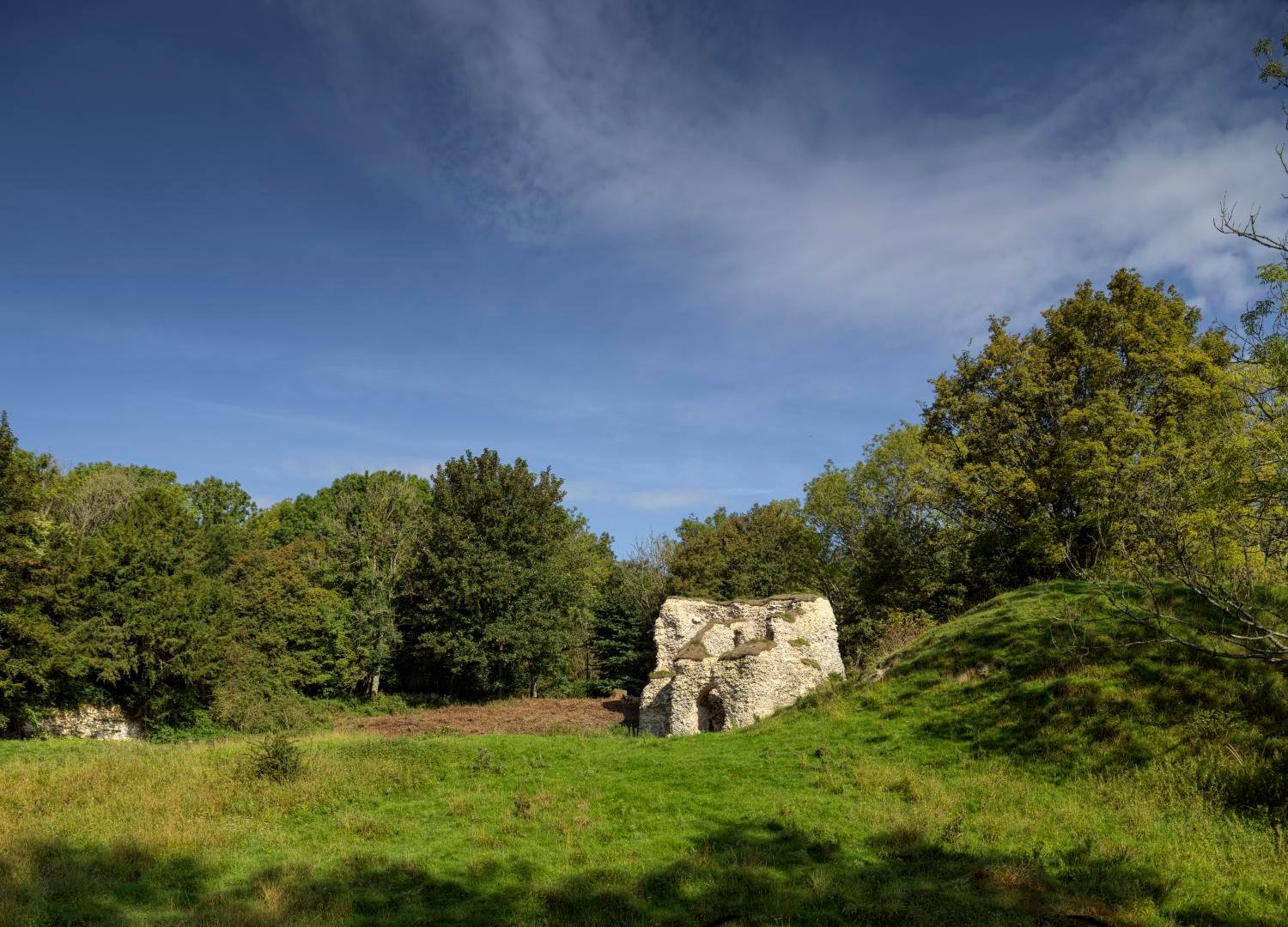Grant Secures Medieval Castle in Hampshire
Work to secure the remains of Merdon Castle near Winchester is now complete.
A £240,700 grant from Historic England has funded specialist repairs, repointing, and the introduction of soft capping (adding a protective layer of earth and grass to the tops of ruined walls) to the Medieval motte and bailey castle.
Works have also taken place to make safe, cap, and consolidate an approximately 400-foot ‘bottomless’ well dating from the same period.
The scheduled monument was overgrown, and stonework had become loose. These improvements have stabilised the structure and will allow it to be removed from the Heritage at Risk Register.
Merdon Castle has spent many years on the Heritage at Risk Register and it was critical that a programme of repairs was undertaken now to avoid further loss. A new partnership with the University of Winchester holds exciting possibilities for discovering more about this historic site while helping students develop important skills.
The total project cost was £288,840, and the landowner provided the additional funding. The work was led by Conservation Accredited professionals at The Goddard Partnership and carried out by Conservation Contractors PIERRA.
Royal connections
It is believed that Merdon Castle was built between 1129 and 1138 by Henry de Blois, Bishop of Winchester, during the reign of his brother Stephen, the last Norman king of England.
The castle was partly demolished in 1155 on the accession of Henry II but was used as a bishop's palace until at least the 14th century. The Medieval castle was built within the ramparts of an earlier hillfort, which probably dates back to the Late Bronze Age or Early Iron Age (8th to 5th centuries BC).
We’re delighted that, together with the owners and Historic England, we have been able to introduce Merdon Castle to our students through their study of archaeological field techniques. We’re excited to expand this programme so that students, and the monument itself, benefit in the long term.
Enabling students to learn new, vital skills
With support from the landowner, Merdon Castle is being used to develop important skills within the heritage sector.
Last year, the Society for the Protection of Ancient Buildings (SPAB) used the site as part of a practical session on traditional building limes and their uses. Working with older and historic buildings requires specialist knowledge, so hands-on training is vital for these methods to be passed on.
The University of Winchester is now using the site for teaching students survey skills, including laser scanning and ground penetrating radar, project management, and analysis.
Merdon Castle is on private land and is usually closed to members of the public. However, regular community walks are arranged by the landowner to allow people to see the site up close and understand its rich history. A recent village open day gave 70 people access to the site.
A collection of local people and interest groups, including WARG, the society for Winchester archaeology and local history, are working with the landowner to help maintain the site into the future.





